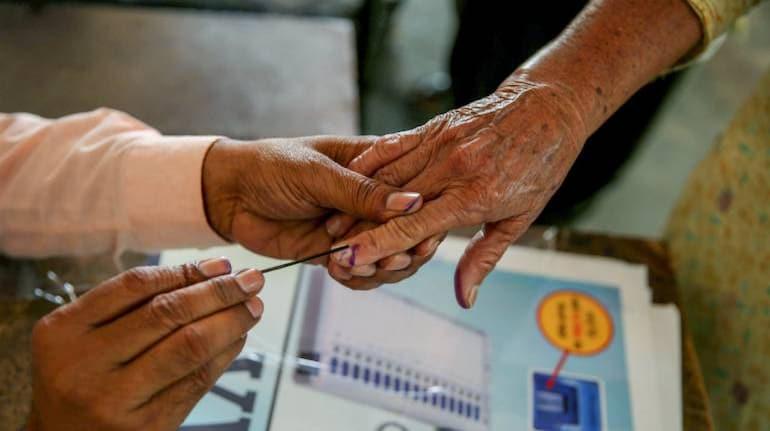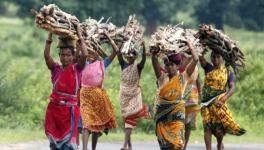TN Elections: How Caste Influences the Decision-Making of Major Political Parties

Representational Image. Image Courtesy: Moneycontrol
Despite having the image of a state far and ahead in social reforms, Tamil Nadu is no stranger to caste politics. Caste groups, organisations and parties have a huge say during the polls thanks to the vote bank they claim to possess, however limited they may be.
The clout of such groups, particularly intermediate or dominant castes, across the state have kept the major parties, including the Dravidian parties, on their toes. The naming of districts and transport corporations after leaders of caste groups has taken place in Tamil Nadu, exposing the role of caste organisations and political parties.
The All India Anna Dravida Munnetra Kazhagam (AIADMK) and the Dravida Munnetra Kazhagam (DMK) have played their roles in ensuring the sustenance of the caste-based organisations for political gains.
The deafening silence of the Dravidian parties during incidents of caste violence, atrocities or honour killings expose their allegiance to the dominant caste.
EMERGENCE OF OPS AND EPS
The emergence of two familiar leaders in the state, Chief Minister Edappadi K. Palaniswami (EPS) and his deputy O. Panneer Selvam (OPS) within the ruling AIADMK, can be attributed to the importance given to the caste groups they belong to, who form a solid vote base for the party.
EPS hails from the western part of Tamil Nadu and belongs to the dominant Gounder community, while OPS hails from the south and belongs to another dominant caste group called the Mukkulathor, which includes the Kallar, Thevar and Agamudayar sub-castes.
While both began their political journey from the grassroots, the caste they belonged to pushed them up the ladder ahead of many other senior leaders. The two communities form a strong vote base for the AIADMK.
WEST, CENTRAL AND SOUTH TAMIL NADU
Though many organisations representing caste groups exist, recent years have seen a mushrooming of political outfits. In the Kongu region – the western part of the state – fringe political outfits carry the term ‘kongu’ with them by default. This includes the KonguNadu Makkal Desiya Katchi, Kongu Ilaingar Peravai, KonguNadu Munnetra Kazhagam and KonguNadu Jananayaka Katchi, to mention a few.
These organisations, much to the dismay of the major parties, claim to be the representatives of the Gounder community which forms between 12% to 15% of the total population of the state.
The Mukkulathor community, constituting around 10% of the population, wields considerable influence in the southern and central districts of the state. Late chief ministers M.G. Ramachandran and J. Jayalalithaa have contested from the southern district banking solely on the votes from the community.
Though the number of parties representing caste is relatively low, the community has a larger say within the AIADMK and the splinter group Amma Makkal Munnetra Kazhagam (AMMK). Smaller parties like Anaithu Tamil Agam Katchi, All India Moovendar Munnani Kazhagam and Mukkulathor Puli Padai claim the support of the community.
The consolidation of votes by such parties have forced the major Dravidian parties to accommodate them within their fold for electoral gains. The DMK has also been banking on the minority, Dalit and OBC vote in the elections.
VANNIYAR SANGAM AND PMK
Another dominant caste in the northern part of the state are the Vanniyars, who constitute around 12% of the population. The Vanniyar Sangam came into existence in the late 1980s also as a show of strength of the community, an organisation which later transformed into the Pattali Makkal Katchi (PMK) in 1989.
The term ‘pattali’ translates to ‘toiler’, but has nothing to do with working class politics. The community tends to lean towards the PMK, which garnered around five per cent of the votes in the 2019 General Elections. The party has used its voter base to bargain with both, the DMK and AIADMK, on multiple occasions.
The party is known for its association with violence, the recent stone pelting at trains in the outskirts of Chennai during a march for internal reservation, being a recent example. The AIADMK government passed a resolution in the assembly for 10.5% internal reservation for the Vanniyars just ahead of the elections.
The two Dravidian parties have toed similar lines by fielding candidates of the community in their regions of influence. The office bearers of these parties in such regions hail predominantly from the Vanniyar community.
DIVERSE PRESENCE OF OTHER COMMUNITIES
Other communities are spread far and across, unable to consolidate their presence in a particular region. The Mudaliyar, Yadavas, Reddiars, and Kammalars have a significant presence and are spread over the state, with the exception of the Nadars. C.N. Annadurai, the founder of the DMK and the first chief minister from the party, is from the Mudaliyar community from Kancheepuram district.
Districts like Kanyakumari, Tirunelveli, Virudhunagar and Thoothukudi have a considerable Nadar population. Late chief minister K. Kamaraj, Telangana governor Tamilisai Soundararajan and former union minister P. Radhakrishnan hail from the community and the same region.
The Bharatiya Janata Party (BJP) has considerable support in Kanyakumari due to the community, but it remains divided while voting.
The ‘Nadar Mahajana Sangam’ of the Nadar community is a powerful organisation in the region and quite influential. A vast majority of the people's representatives in the region hail from the community.
ATROCITIES AGAINST DALITS
Irrespective of the dominant community in any particular region is, Dalits have been at the receiving end. The existence of untouchability in hundreds of villages, presence of caste walls, fences and the cruelty of honour killings, exposes the vulnerability of the Dalit population. They constitute 20% of the state population, the highest for any caste group.
The Dalit population is spread across the state, highly concentrated in the Kongu region, Chennai, Vizhuppuram, Vellore, Tiruvannamalai and the delta districts. Not surprisingly the Kongu region leads in atrocities against Dalits.
The collapse of an untouchability wall claimed the lives of 17 people in Coimbatore district, a major incident in December 2019. The delta region is no stranger to such violence, with the wounds of the Venmani massacre yet to heal even after 50 years.
The Dalits in Vanniyar-dominated areas are always vulnerable to attacks. PMK cadres were alleged to have incited violence during the 2019 polls which left many houses and properties damaged.
Even the COVID-19 induced lockdown could not prevent atrocities against Dalits, said a report by the Tamil Nadu Untouchability Eradication Front (TNUEF).The state also has the dubious distinction of accounting for higher crimes against Dalits.
More intriguing is the silence of the Dravidian parties and other mainstream parties, with the exception of the Left and Dalit parties. On most occasions the Dravidian parties paint such incidents as law and order issues and not as caste-based violence.
Such reluctance from the parties, particularly from the AIADMK and DMK, repose the claim of major parties remaining silent on caste issues, fearing backlash from the intermediate or dominant caste populations during elections.
Get the latest reports & analysis with people's perspective on Protests, movements & deep analytical videos, discussions of the current affairs in your Telegram app. Subscribe to NewsClick's Telegram channel & get Real-Time updates on stories, as they get published on our website.
























